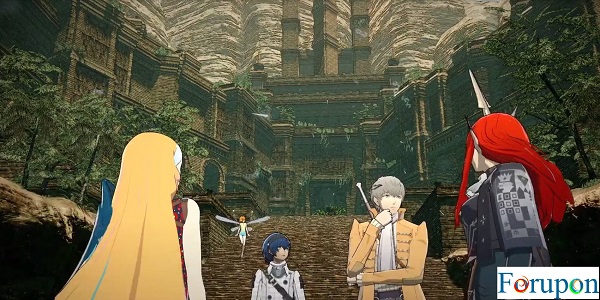Homo Orelon: The Mysterious Link in Human Evolution
Introduction
The history of human evolution is filled with discoveries that redefine our understanding of who we are and where we come from. Scientists have uncovered various species in the Homo genus, including Homo habilis, Homo erectus, and Homo neanderthalensis, each playing a crucial role in shaping the modern human. Recently, a fascinating new concept has emerged—Homo Orelon, a theorized species that may bridge the gap between ancient hominins and an advanced evolutionary lineage.
Although still debated, Homo Orelon presents a unique perspective on how human intelligence, adaptability, and genetic variations could have led to an alternative evolutionary path. This article explores the possible origins, characteristics, and implications of Homo Orelon, shedding light on a species that could redefine what it means to be human.
The Origins of Homo Orelon: A Missing Puzzle Piece?
The discovery of ancient human relatives often comes from fossil evidence, DNA analysis, or unexpected findings in unexplored regions. If Homo Orelon existed, it could have been a species that developed alongside or in between known hominin species but remained undetected due to limited fossil evidence or its survival in isolated environments. Some theories suggest that Homo Orelon may have branched off from Homo erectus, developing unique cognitive and physical traits that set it apart.
Unlike Neanderthals, who coexisted with early modern humans, Homo Orelon may have followed an entirely different evolutionary course, possibly thriving in remote areas where its presence was overlooked. The possibility of an undiscovered human species raises profound questions about the diversity of human evolution and whether other advanced hominins once walked the earth alongside us.
Physical Characteristics: What Did Homo Orelon Look Like?
While there is no confirmed fossil evidence of Homo Orelon, theoretical reconstructions suggest it could have possessed traits that were a hybrid of ancient and modern human characteristics. Some scientists speculate that Homo Orelon may have had a larger brain capacity compared to its predecessors, leading to enhanced problem-solving abilities, complex social structures, and possibly early technological advancements. Its skeletal structure might have been leaner yet stronger, allowing it to adapt to different environments while maintaining high endurance levels.
Unlike Neanderthals, who had a stocky build to survive colder climates, Homo Orelon may have been better suited for a variety of conditions, making it highly adaptable. Its facial features could have resembled modern humans but with subtle differences, such as a more pronounced brow ridge or a unique jaw shape. These speculations provide an exciting look at how Homo Orelon might have differed from both ancient hominins and contemporary humans.
Cognitive Abilities: Could Homo Orelon Have Been More Advanced?
One of the most intriguing aspects of Homo Orelon is the possibility that it developed higher intelligence compared to other early human species. If true, this species could have created more complex tools, developed primitive forms of communication, and even demonstrated early signs of abstract thinking. While Homo sapiens eventually dominated the planet, there is a chance that Homo Orelon existed in isolated regions where it thrived with its own unique societal structures.
Some theories even suggest that Homo Orelon could have possessed early linguistic skills, allowing for more advanced cooperation within groups. If this species developed distinct cultural practices, it could challenge the idea that only Homo sapiens had the capacity for deep thought, artistic expression, and intricate problem-solving.
The Extinction Mystery: What Happened to Homo Orelon?
If Homo Orelon did exist, the next big question is: what happened to it? Many hominin species, such as Neanderthals and Denisovans, eventually disappeared due to climate change, competition with Homo sapiens, or genetic absorption through interbreeding. It is possible that Homo Orelon faced similar challenges, struggling to compete with the rising dominance of modern humans.
Another possibility is that Homo Orelon merged into the Homo sapiens gene pool, leaving behind traces of its existence in the genetic makeup of modern humans. Some genetic anomalies found in isolated populations today could be remnants of a lost hominin species. If this theory holds, studying ancient DNA samples could provide clues about the presence of Homo Orelon and its contributions to human evolution.
Implications for Human Evolution and the Future
The idea of Homo Orelon challenges our understanding of evolution and the possibility that multiple intelligent species once coexisted. If further evidence supports the existence of this species, it could reshape how we perceive human history. More importantly, it raises the question of whether evolution is still ongoing in ways we don’t yet understand.
Could a future species, an evolved form of Homo sapiens, emerge in the coming millennia? Would advancements in genetics and artificial intelligence accelerate human evolution in ways similar to what Homo Orelon might have experienced in its time? These possibilities open the door to new scientific discussions on where humanity is headed and whether we might one day discover more unknown branches of our evolutionary tree.
Conclusion
Although Homo Orelon remains a theoretical concept, it represents the exciting potential for undiscovered aspects of human evolution. Whether it was a forgotten species that once coexisted with early humans or a genetic anomaly that disappeared over time, the idea of Homo Orelon fuels curiosity about our past. As science advances, new fossil discoveries and genetic research could provide insights into this mystery, proving that the story of human evolution is far from complete.
If Homo Orelon did exist, it would serve as a reminder that history is vast, complex, and always open to new revelations. Until then, the search for our lost relatives continues, and with it, the endless possibilities of what it truly means to be human.


Comments are closed.